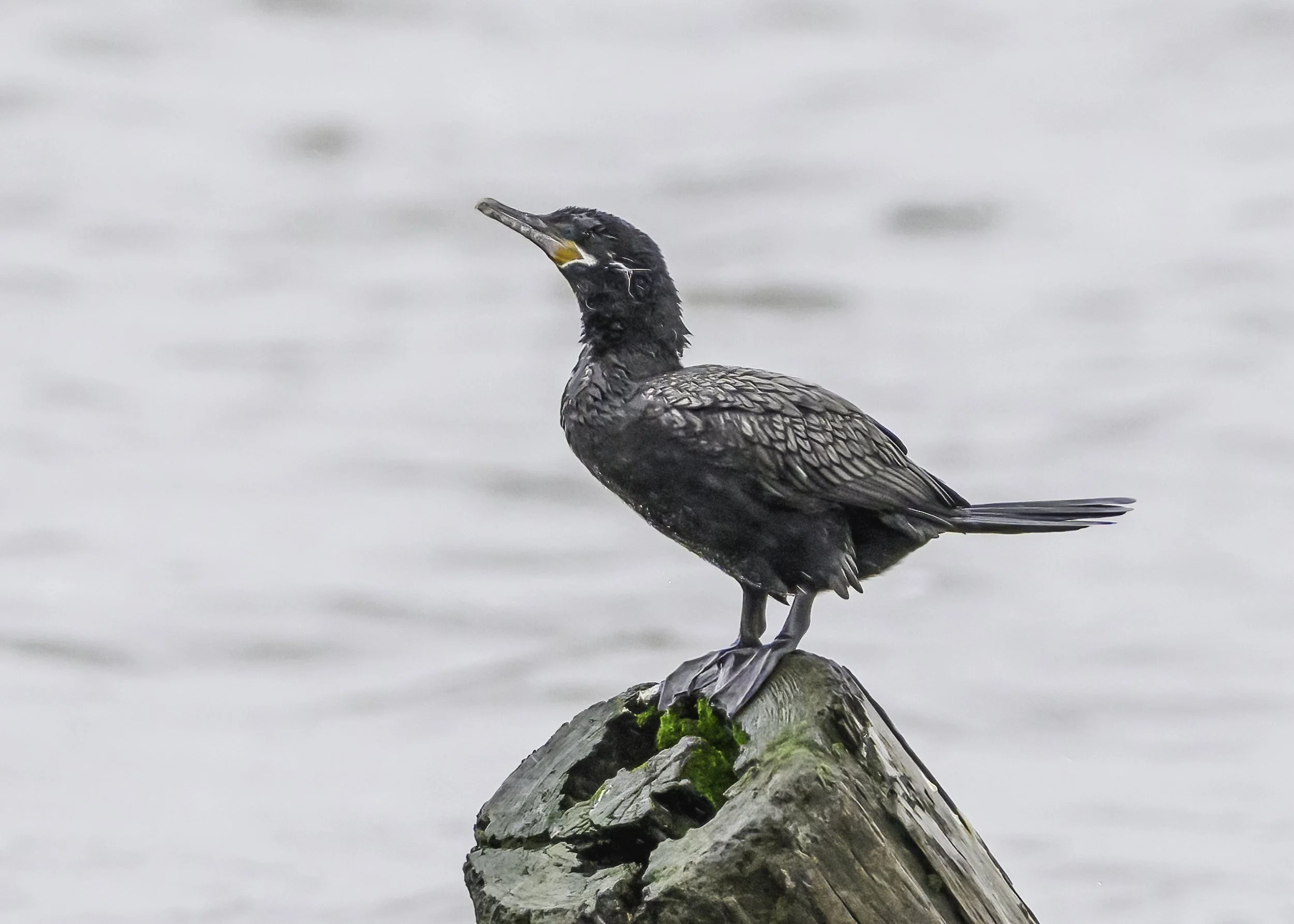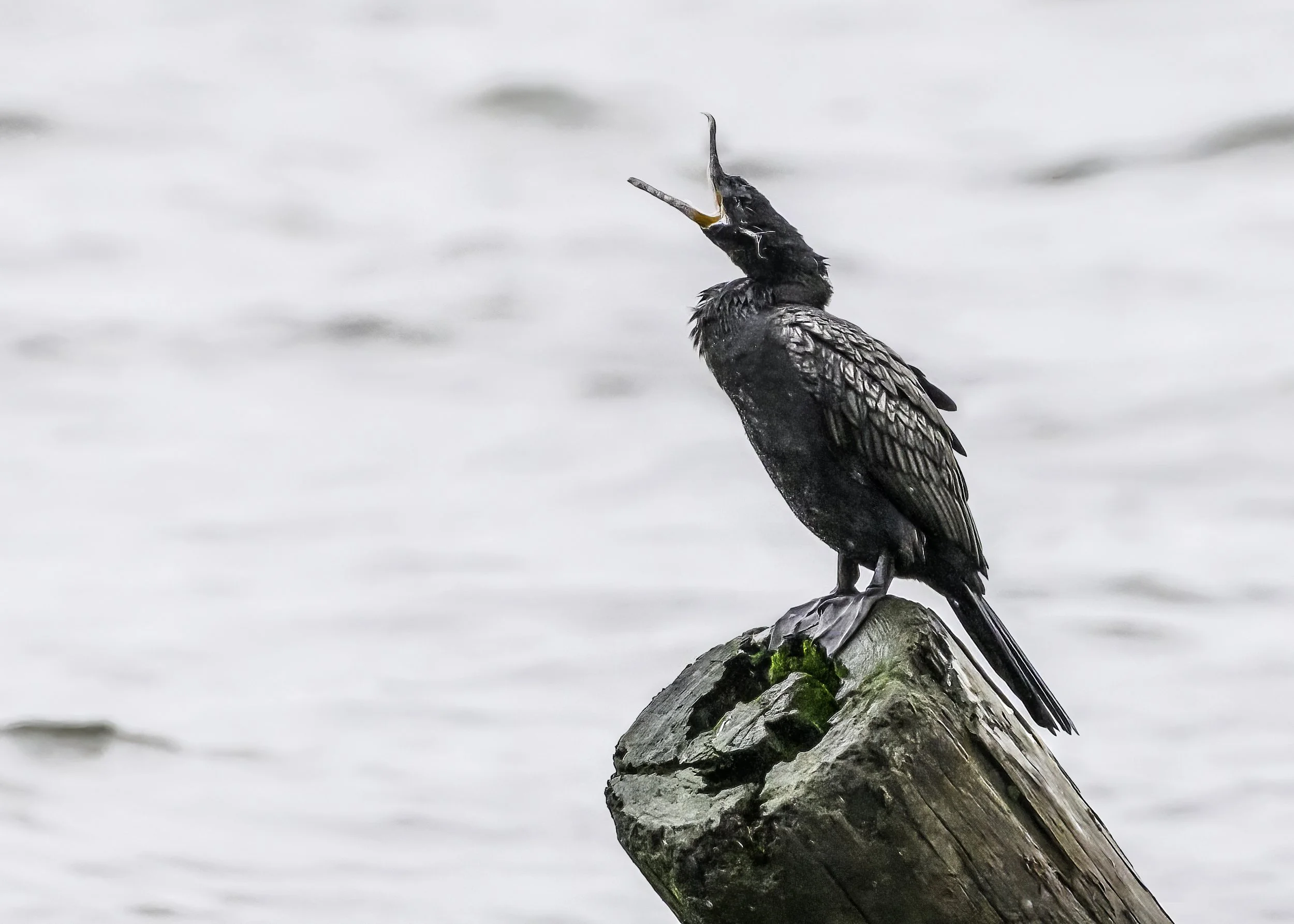The Waterfront….
A rainy day with plenty of chores to be done around the house. But there’s always a chance to see what nature has to offer, even in inclement weather. And so, in between visits to the florist, the grocery, the gas station and so on, I made a quick detour down to the Newburgh Waterfront. This site always has plenty of action even if it is usually the same cast of characters. When I arrived today, I ran into a mini-territorial dispute between two Ring-billed gulls. I had the feeling that this was a case of “I want it all, and I want it now”. With the amount of rainfall we had over the past two days, there were puddles and rivulets all over the place and by the way, this is wishing 30 feet of the Hudson River! Still, this one gull found it necessary to chase the second out of his newly claimed fresh water bath. Seems like there is always action at the “front”.
I have to admit that I did have a goal in mind when I decided to make this trip over to the Waterfront. Over the past several years, we have had a seasonal visitor at the water’s edge. This bird at first glance looks similar to a number of the other birds on site, Double-crested cormorants. But several years ago, a sharp-eyed birder from our club noticed that this bird was different….smaller and with a slightly different facial pattern. Upon closer examination, it proved to be a Neotropic cormorant! This cormorant is quite a bit smaller than our usual DC cormorant found here, and the most distinguishing characteristic is the white border around the bill easily seen on the photo below.
Neotropic cormorant - Newburgh Ferry Landing Nikon Z9 with Nikon Z 180-600 zoom at 600mm 1/100 sec, f/7.1, ISO 1400
This range map for our hird indicates why we are so surprised to have this spring/summer visitor in our neighborhood. The map does indicate that there are some reports of the Neotropic showing up along the coast from South Carolina to Long Island, but why this bird would venture this far north into the Hudson Valley and do so year after year … well, you’ll have to ask the cormorant.
I stuck around for a while hoping for a flight shot or some interaction with the other cormorants on the river, but eventually, it was obvious that the bird was tiring of my “paparazzi” attitude, and with his gaping yawn, I decided it was time to get back to my chores. Great to see this bird return as just the other day we had just been pondering over whether or not he would make an appearance again this year. We all appreciate the Neotropic’s punctuality.
Tech Tip - We usually think of using a relatively high shutter speed to stop action. Obviously, this bird was not engaged in any activity that would warrant “stopping the action”. So why a shutter speed of 1/1000 sec? When using a long telephoto lens, you have to remember that all the smallest movements of the camera are magnified and can cause your image to be slightly blurred. The general rule of thumb has long been that the slowest shutter speed you use should be the reciprocal of the length of the lens. A 600 mm lens therefore would require a 1/600 sec exposure to insure no camera-shake. Today’s modern cameras are generally all equipped with “stabilization” features which allow you to shoot well below the recommended “inverse rule” speed, but it always better to be a little faster than needed if you want razor sharp images.



